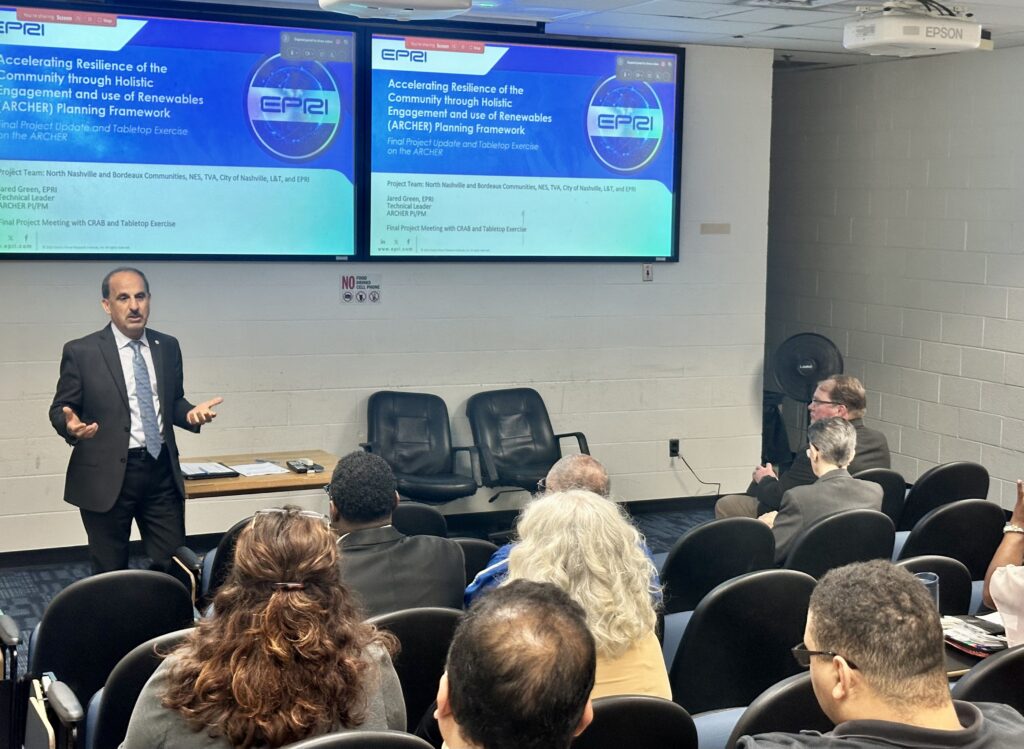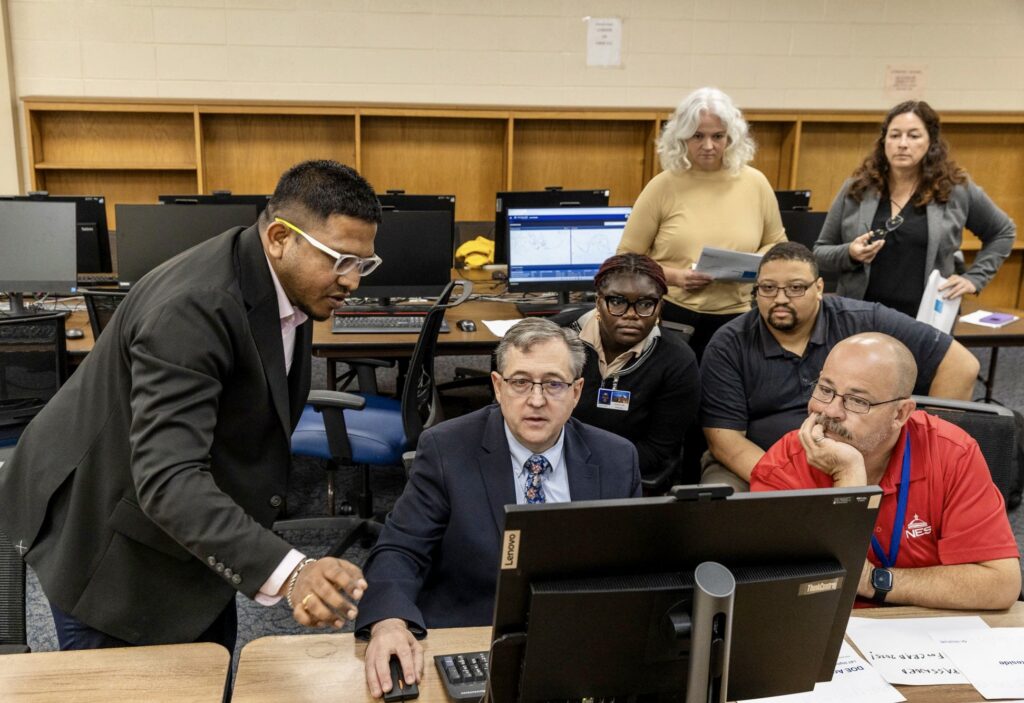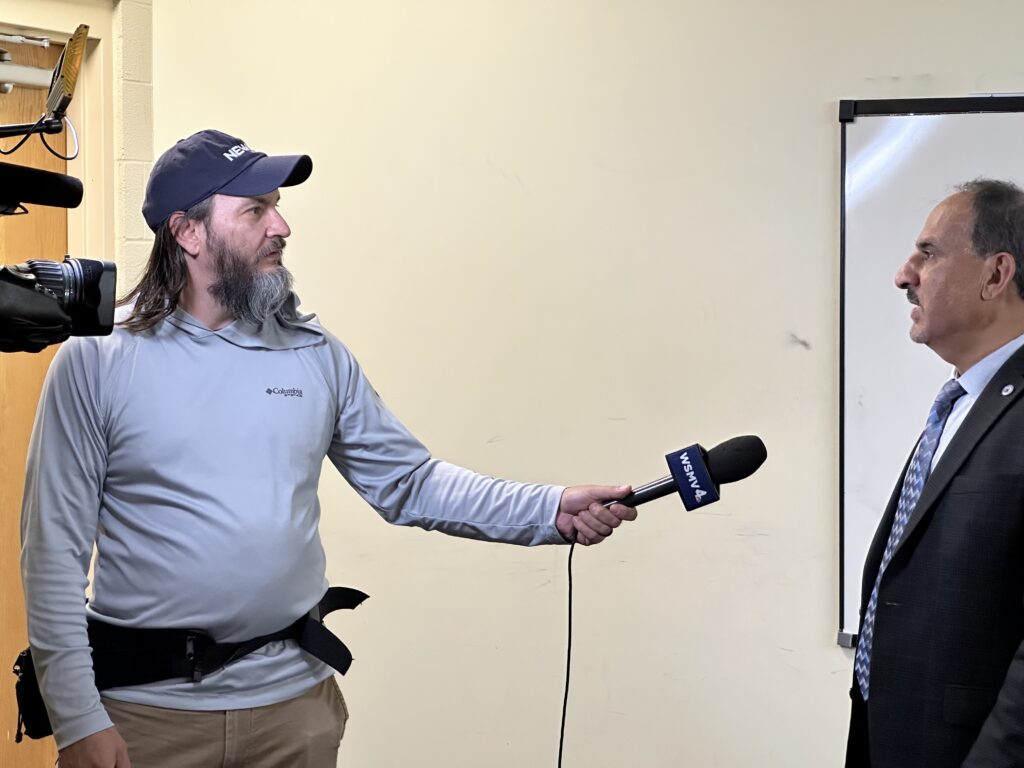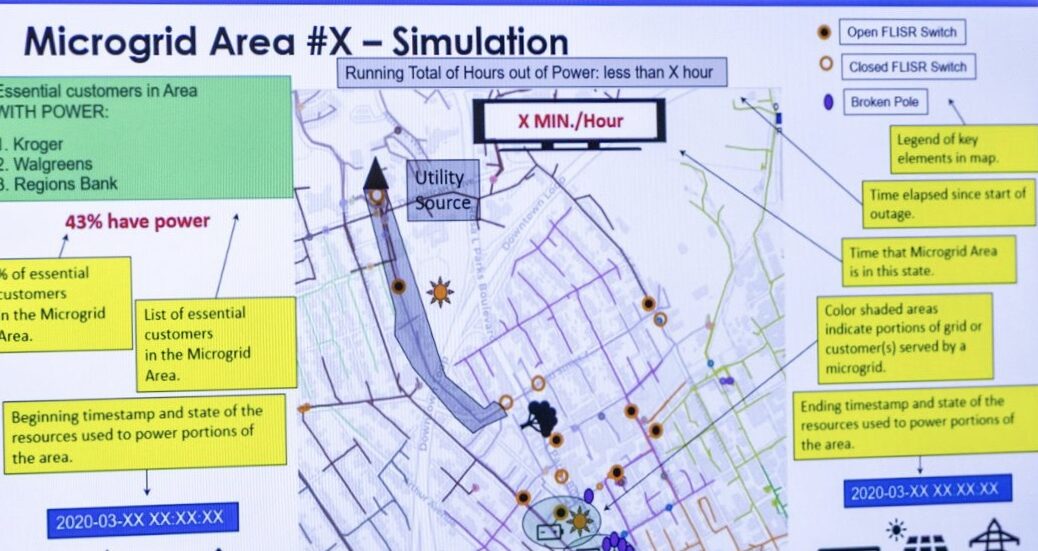NASHVILLE, Tenn. (TSU News Service) – On May 30, Tennessee State University partnered with local and federal organizations to conduct a virtual simulation of the March 2020 Nashville tornado. This initiative aims to enhance the resilience of Nashville’s infrastructure through innovative microgrid systems and self-contained electrical networks designed to safeguard critical services during extreme weather events.

The collaboration involves TSU, the Electric Power Research Institute (EPRI), L&T, the Tennessee Valley Authority (TVA), Nashville Electric Service (NES), and the Metropolitan Government of Nashville and Davidson County. This simulation is part of the ARCHER (Accelerating Resilience of the Community through Holistic Engagement and use of Renewables) project led by EPRI, which assesses how microgrid systems can better protect vital services in the wake of disasters.
“Here at TSU, we are committed to bridging research with community needs,” said Dr. Saleh Zein-Sabatto, professor and chair of the Department of Electrical Engineering at TSU. “Through the ARCHER initiative, we are not only advancing technology but also empowering neighborhoods to build resilience against climate-induced disasters.”

As part of the ARCHER project, TSU established a Community Resilience Advisory Board (CRAB) composed of influential leaders in the North Nashville community. The board gathered insights on which community assets should be prioritized for energy resilience, infrastructure hardening, and power restoration following outages. This inclusive approach ensured that community feedback was integral to the simulation model.
“Integrating distributed energy resources like microgrids and solar power is vital for enhancing the reliability and resilience of our grid,” said Tony Richman, engineering manager for grid transformation at NES. “Projects like ARCHER that engage our customers help us prepare for unexpected disruptions while strengthening relationships in the communities we serve.”

Georgia Caruthers, senior project manager at TVA, emphasized, “We are proud to collaborate with TSU and others on the ARCHER project, as it underscores TVA’s mission to continuously enhance the resilience of the systems serving our 10 million customers—especially during severe weather.”
The demonstration showcased the power of combining community engagement with cutting-edge utility planning to bolster resilience strategies. As communities face intricate social, economic, and environmental challenges, the ARCHER project sets a new standard for preparedness against extreme weather.

“This collaboration between Tennessee State University, Nashville Electric Service, and the larger community underscores TSU’s vital role in ensuring the safety and well-being of the neighborhoods surrounding the university,” said State Rep. Harold Love, a TSU alum and staunch supporter. “If a power outage occurs, this initiative will help us prioritize which areas need to be restored first. It exemplifies how TSU is not only committed to educating students but also to safeguarding and valuing the community around it.”
Durgesh Manjure, vice president of Integrated Grid and Energy Systems at EPRI, noted, “Building robust relationships between communities and utilities is essential for driving transformative change. By merging advanced modeling with grassroots insights, we’re charting a course for energy resilience accessible to all.”

Arindam Maitra, L&T vice president of Power System Innovation, added, “The interactive dashboards developed through the ARCHER project, utilizing the proven L&T-Spark™ platform, provide a cohesive solution for integrating utility and community data, thus enabling enhanced decision-making for utility operators.”
The March 2020 tornado caused significant destruction in North Nashville, which is home to TSU, leading to extended power outages for many residents. The outcomes of this initiative will help Nashville’s residents and businesses better prepare for future natural disasters.
“The research being conducted at TSU has the potential for significant change in Nashville and beyond, shaping our strategies to mitigate disruptions from climate-related events,” said Kendra Abkowitz, senior director of Sustainability and Resilience from the Mayor’s Office. “This collaborative approach ensures that our community will emerge stronger and more resilient against future challenges.”
With the frameworks and methodologies developed through ARCHER, Nashville and other communities across the nation will have a proven blueprint for achieving energy security and resilience in an era of escalating climate events.
For more information on the TSU College of Engineering, visit www.tnstate.edu/engineering/
About Tennessee State University
Founded in 1912, Tennessee State University is Nashville’s only public university and is a premier, historically black university and land-grant institution offering 41 bachelor’s degrees, 15 graduate certificates, 27 master’s degrees, and nine doctoral degrees. TSU is a comprehensive research-intensive institution with an R-2 Carnegie designation, with a downtown Avon Williams Off-Campus Instructional Site and the Otis Floyd Nursery Research Center in McMinnville, Tennessee. With a commitment to excellence, Tennessee State University provides students with a quality education in a nurturing and innovative environment that prepares them as alumni to be global leaders in every facet of society. Visit TSU at tnstate.edu.


